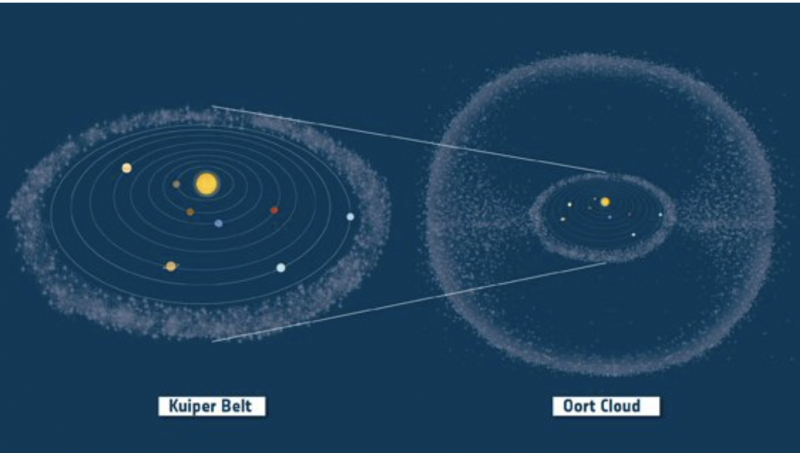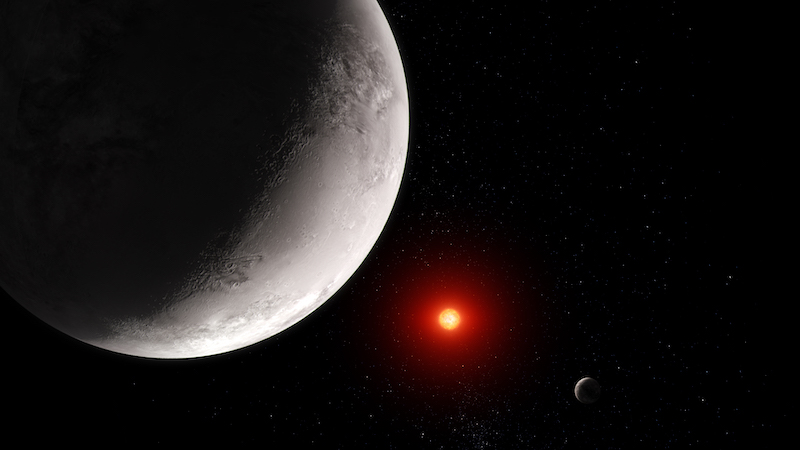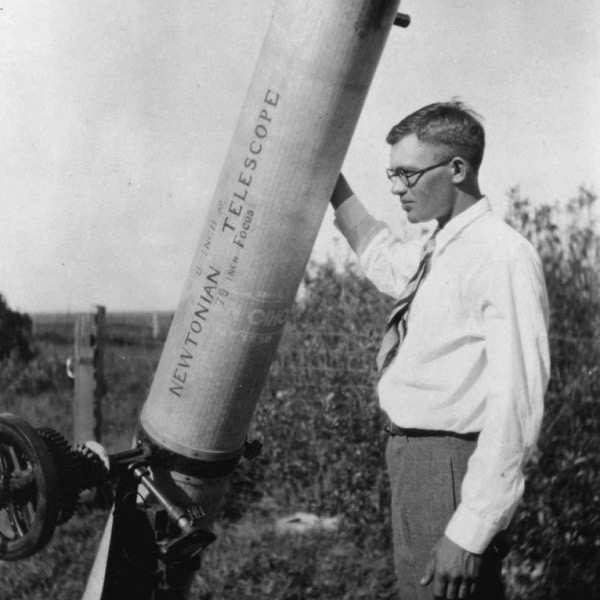
Earthlike planet in distant Kuiper Belt?
Japanese researchers said this month (September 7, 2023) that a possible Earthlike planet – with a mass some 1.5 to 3 times that of our home world – is lurking in the far, frozen reaches of our own solar system. And its presence could explain the unexpected behaviors of some of the strangest objects orbiting our star.
Astronomers Takashi Ito and Patryk Sofia Lykawa probed this realm of space using a special computer program – called an N-body simulation – that simulates the gravitational interactions of solar system bodies.
They looked not within the primary Kuiper Belt, which might be said to begin at Neptune’s orbit (at 30 Earth-distances from the sun, or 30 AU) and to extend to perhaps 50 AU.
They looked beyond 50 AU, into what’s sometimes called the distant Kuiper Belt, or scattered disc, a realm whose boundaries are not well defined. And they learned that the odd behaviors astronomers have witnessed in the motions of icy bodies beyond 50 AU might be explained by the gravitational influence of an Earth-size planet.
Their peer-reviewed study is published in the September 2023 Astronomical Journal.
Where, what, how far?
We know the small icy bodies that live in the scattered disc region – in the distant Kuiper Belt, beyond 50 AU – sometimes have highly eccentric orbits. And the question has always been … why?
The results of the new simulation by Lykawa and Ito were unexpected, these astronomers said. A report from Kindai University, where part of the work was conducted, said:
Remarkably, the simulation’s best results suggested that there should be an undiscovered planet with a mass 1.5-3 times that of the Earth orbiting the sun at distances between about 200 and 500 AU (or even ~200-800 AU).

Earthlike planet fits the bill best
Most objects beyond Neptune – aka trans-Neptunian objects, or TNOs – behave themselves. They keep to well-understood orbits in the massive toroid-shaped cloud of millions of icy, comet-like bodies that is the primary Kuiper Belt.
But objects in the distant Kuiper Belt – such as dwarf planet Sedna – are rogues that follow highly elliptical paths. By this, we mean Sedna’s closest and farthest points from the sun lie at very different distances. Sedna – which takes approximately 11,400 Earth-years to orbit the sun once – comes as close to the sun as 76 AU. Its farthest distance isn’t known with certainty, but one estimate places it at 937 AU.
That’s halfway to the realm of the comets, the Oort Cloud, which is often said to begin around 2,000 AU.
Misbehaving bodies like Sedna also leave the confines of the ecliptic plane of the solar system – demonstrating high orbital inclinations – rising above then sinking below the pathway most bodies follow around the sun.
So far, no model of the solar system – migrating ancient planets, resonance with the gas giants, passing stars or rogue planets – could explain all of this behavior. The researchers, in their recently published paper describing their computer simulation, say these models only give partial answers.
More than 1,000 trans-Neptunian objects (TNOs) that belong to distinct dynamical classes have been discovered, allowing for important advances in our understanding of the trans-Neptunian region. However, a single evolutionary model that explains the entire TNO orbital structure has not been developed.
But, they said, an Earth-mass planet circling at an inclined orbit might do the trick:
Thanks to the palpable mass and an inclined orbit of about 30 degrees, such a planet could have generated the large number of detached TNOs, the highly inclined TNOs, as well as the extreme TNOs with peculiar orbits, in line with our current observations.

Not Planet Nine, not Planet X, not Niburu
Back in 2016, another set of researchers using a different simulation also concluded a ninth planet – unoriginally dubbed Planet Nine – was orbiting somewhere in the Kuiper Belt.
The creators of the new model are quick to point out theirs is a different body of a much different size:
Planet Nine is much more massive and hypothesized to be located on more distant orbits.
In addition, while Planet Nine was proposed to address possible peculiar properties of some distant TNOs, our scenario addresses the structure of the distant Kuiper Belt. …
And – if you’re a student of the history of science – you’ll enjoy knowing the newly hypothesized planet isn’t Percival Lowell’s Planet X either. That earlier theoretical ninth planet – searched for by Lowell and others in the early 1900s – was based on bad math and probably doesn’t exist at all. But the search for it did lead directly to the discovery of Pluto, now categorized as a dwarf planet, which orbits in the realm of the TNOs at 39 AU.
And, fortunately for everyone, the newly predicted planet is absolutely not Nibiru, a rogue planet said by doomsday conspiracy theorists to be heading for Earth to wreck the place and kill us all.
If we look, what’ll we find?
Often in science, mistaken theories lead to real results. That was true of the search for Planet X, which was spawned by apparent perturbations in the orbit of the 8th planet, Neptune. It turned out those perturbations didn’t exist. But they led 25-year-old Clyde Tombaugh to find Pluto in 1930, decades after Lowell’s death.
In this case as well, Ito and Lykawa believe, if we search the far reaches of our solar system for an Earthlike planet, we might find something interesting and unexpected:
Furthermore, this scenario also predicts the existence of new populations [of trans-Neptunian objects], located beyond 150 AU, generated by the Kuiper Belt planet’s perturbations. [If so, they] can serve as observationally testable signatures of the existence of this planet.
More detailed knowledge of the orbital structure in the distant Kuiper Belt can reveal or rule out the existence of any hypothetical planet in the outer solar system.
Bottom line: A recent computer model predicts a new Earthlike planet that lies hidden in the outermost solar system. Will we search for it? Will we find it?
Source: Is There an Earth-like Planet in the Distant Kuiper Belt?
The post A new Earthlike planet in the distant Kuiper Belt? first appeared on EarthSky.
0 Commentaires